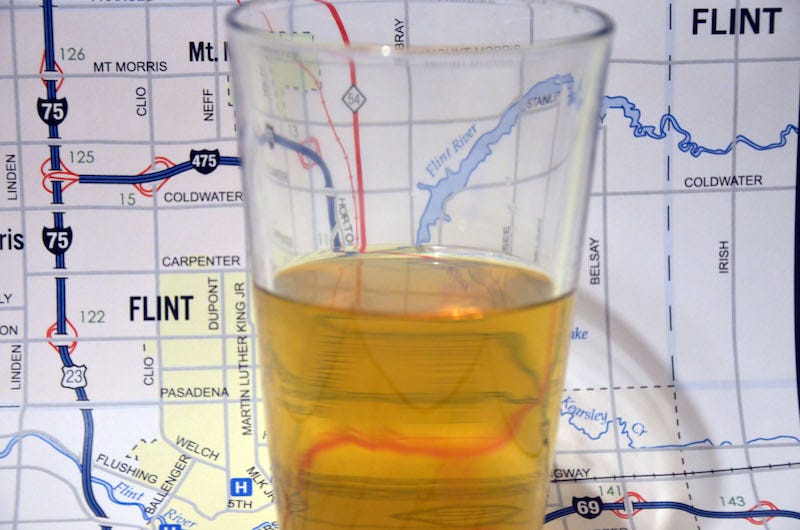By Katherine Underwood

The average urban American uses around 157 gallons of water per day. This statistic accounts for all indoor residential, commercial, industrial, and institutional water one person is responsible for in one day. Professor Ned Paschke, a civil engineer and program director in the UW-Madison department of engineering professional development (EPD), generated this number as part of one of the many classes he teaches through EPD. Clean water is a vital part of life, so large issues arise when a city like Flint, Michigan has a crisis in which the city water is completely contaminated. Fortunately, when a problem like this is recognized and managed it doesn’t have to be as big a problem.
Flint, Michigan used to obtain its water from Lake Huron via the City of Detroit. Feeling this an unnecessary cost, Flint decided to switch their water source to the Flint River, known for its uncleanliness. The switch was intended to be temporary while a new pipe was built from Lake Huron to Flint. But soon after using the Flint River water, the residents noted the change in look, smell and taste of their water. Flint River water is highly corrosive and it was found that iron was causing the water to change color. The water, which was not properly treated with an anti-corrosive agent, was causing iron-made water mains to erode, in turn resulting in brown, iron-filled water. While the visible change wasn’t a desirable trait in itself, there was something far worse occurring that residents could not see. Half of the pipes in Flint, more specifically, the pipes on private property that connect buildings and homes to the large water pipes in the streets, called lateral lines, were made of lead. Since the water was eroding the pipes, the lead was leaching from the pipes into the water. It was found in August that the water contained highly elevated levels of lead. Lead poisoning, which is irreversible and terribly damaging to human health, became a concern for the residents. An anti-corrosive agent would have solved 90 percent of Flint’s problem if it had been used originally.
While the story in Flint is a unique case, many cities across America still use lead pipes as their lateral lines into their home. The city of Madison was innovative in how they handled the lead situation. Madison eliminated the lead risk by replacing all lateral lines. While there are cheaper ways to meet the federal standard of lead in the water, none are as effective. The total project took 11 years and cost the city $15.5 million.
Water quality is a unique issue for every city across America. Some cities, like Madison, get their water from ground water sources via a well system. Since this water is not exposed to as many contaminants, it requires less water treatment and cleaning. For example, Madison only treats their water with chlorine, a disinfectant, and fluoride, which improves dental health. Other cities get their water from rivers and lakes. Since river and lake water is more exposed to air and human contaminants, it may require greater treatment procedures. Water treatment plants are maintained and regulated by the Environmental Protection Agency (EPA). Several acts have been passed throughout the course of history to help keep water regulations up to health standards. For example, the water that leaves treatment plants must be tested and confirmed as safe to consume. The problem with a lot of cities, however, is once the water leaves the treatment plant, it is exposed to the deteriorating pipes.
While the water may be deemed safe to drink as it exits the treatment plant, various elements of aging pipes may cause it to be unsafe by the time it gets to a faucet. According to Paschke, “A greater amount of assets a water system uses is needed for the pipes.” With the rise of suburban living in the middle of the 20th century, a lot of a city’s water utility budget was used to build miles of pipes out to new residential communities. “Now, some 50 years later, for the first time, a significant part of what a water utility owns has become old because of this big growth of the 20th century.” As a result, greater parts of a water utility budget need to go into repairing, replacing and upgrading a city’s piping. “In concept, pipes are not as sophisticated as treatment plants. In cost, it’s actually greater than the treatment plant,” Professor Paschke says.
The recent events in Flint have sparked cities across America to look into their water utility systems to see if there is potential for a similar event to happen to them. Advances in a city’s water infrastructure, while accounting for only a small portion of the entire water system, remain vital to keeping the water safe. Not many Americans realize exactly how much water they use in a day, but if they did, this topic would become a greater concern.
